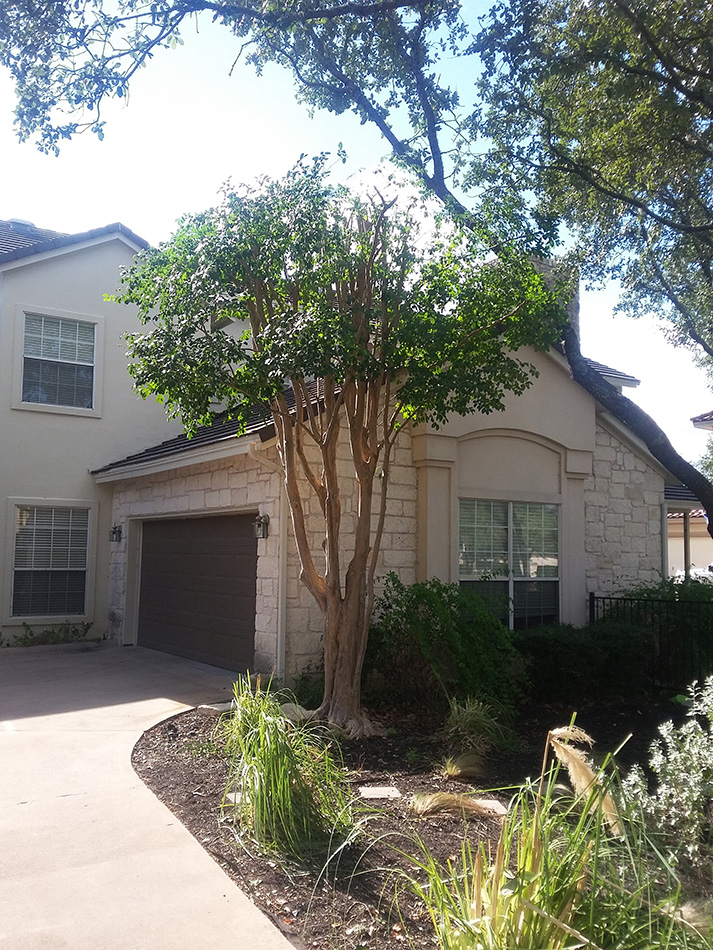“Crepe murder” is a crime that has been on the rise throughout the country – the “amputation” of the beautiful, sinewy branches of the crepe myrtle. For some reason, this species seems to bring out the butcher in people, and they end up topping crepe myrtles with no abandon every year. Tree experts know that crepe myrtle care is a very important matter, and you too, should know how to help them look their best.
The Key to Pruning Crepe Myrtle
Though many people plant crape myrtles, few prune them properly. Correct crepe myrtle care yields gracefully shaped trees with more flowers blooming on stronger stems. In fact, one study found that severely topping crepe myrtles caused six times more dead wood to develop than trees that are pruned properly, and those trees required more annual maintenance. Why? Topped trees neglect to create barriers to decay in a way that a correctly pruned tree does. Many people wrongfully believe that without topping, the flowering would fall off, however, modern varieties are known for their blooming potency. So, leaving the old, twiggy stalks and seed heads alone will actually encourage the crepe myrtles to bloom even better and faster!
Lightly pruning crepe myrtle is all that’s required to keep your trees blooming. So how can you do this properly? Here are some tips that tree experts live by.
Pruning Shrubby or Dwarf Crepe Myrtles
Multi-stemmed, shrubby crepes typically do not require any pruning, unless you notice uneven growth. If you do, simply thin out the crowded branches and head back erratic stems.
Pruning Medium to Larger Tree-Form Crepe Myrtles
- Remove suckers on the trunk by flushly cutting them off or ripping them downward to remove the base of the sucker simultaneously.
- For overgrown trees, avoid topping crepe myrtles and instead, focus on shaping the trunks. Choose up to five main trunks that aren’t touching each other and remove all of the others at the base.
- Next focus on pruning crepe myrtle branches by removing the ones located at the bottom third to half of the tree. Then, remove crowded branches and dead wood. Cutting branches off at the base keeps them from growing back.
- Head back a branch by pruning longer ones back to the branch junction. You’ll find that the branches sprout heaviest at the site of cutting, so pruning them back to an open area in the interior of the tree is your best bet. If you’re not using a tree expert, avoid stubby stems and plan your cuts wisely so new growth fills in the voids.
Remember, topping crepe myrtles too severely disfigures the tree, causes decay and actually creates an unnecessary tradition of removing rank growth triggered by last year’s chopping. Don’t be a culprit or a victim of crepe murder! While you may notice residential and commercial landscapes boasting “amputated” branches in the colder months, resist the temptation to join suit.
Proper crepe myrtle care is easy with the help of a tree expert. Contact one today to see new potential in your landscape!

